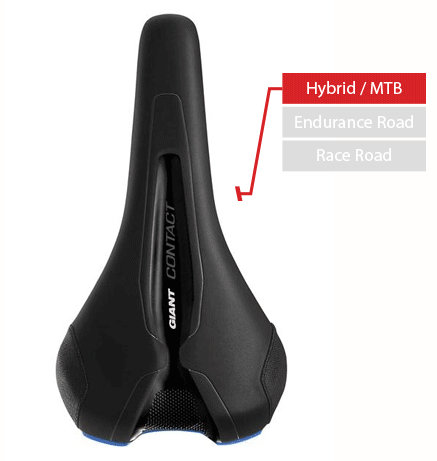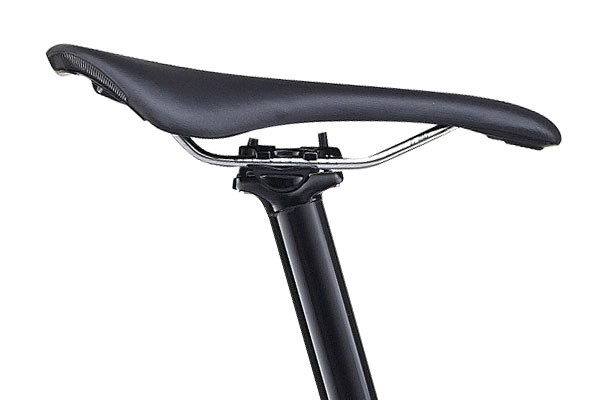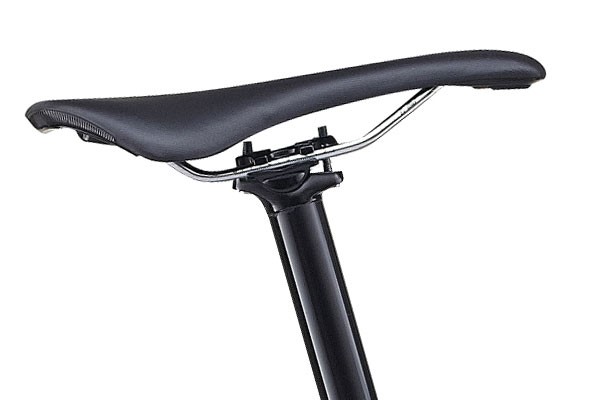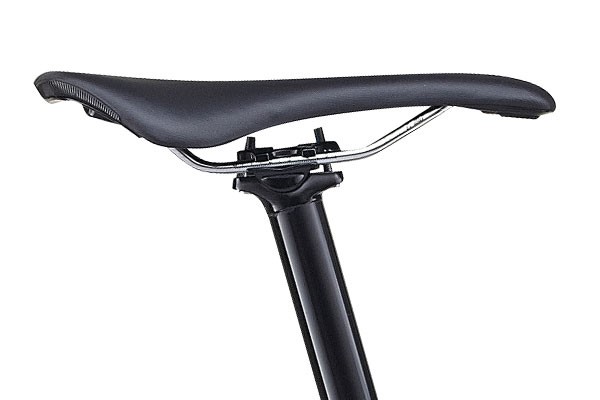How to choose the best men's saddle for you
A properly fitting men’s bike saddle can make all the difference to your comfort and performance whilst riding. It is the key contact point between you and your bike and it will take over half your body weight. By using this saddle guide you’ll discover how to measure your sit bone width and choose the style for your riding so you ride longer, faster and in more comfort.
For female riders, please check out our in-depth women's specific saddle guide.
How to measure your sit bones
Finding your correct sit bone width is easy, and you can do it at home.
All you need is a flat bench or seat, something to rest your feet on, a piece of cardboard, some chalk and a tape measure.
Check out our video to see what you need to do.
What saddle style is right for you?
After measuring your sit bones, you’ll want to consider the saddle style. Manufacturers make slight changes to the widths and profiles of saddles based on type of cycling they’re designed for.
Combine your optimal saddle width with the chart below to find the right saddle for the type of riding you’ll be doing.
Hybrid & mountain bike
Add 20mm to your optimum saddle width when riding a hybrid bikes and mountain bikes. When riding in an upright riding position this will give you improved support, and comfort.
Endurance road bike
Add 10mm to your optimum saddle width when riding long distances on your road bike. These bike saddles off a compromise between weight and comfort.
Road race bike
Don’t add any extra distance to your optimum saddle width. Performance is everything, extra width (and weight) isn’t needed as more of your body weight is through the nose of the saddle.

Key features of men’s saddles
Padding:
Lots of padding doesn’t always translate into comfort. Gel saddles are great for short rides and upright riding. However, gel can be distorted by your weight over time and lose support in crucial areas. It can push gel into your soft tissue for a painful ride.
Saddles with firm padding (such as leather) can take more time to break in but will offer improved comfort in the long run.
Grooves / Cut Outs:
A common feature on saddles is the use of a pressure relief channel, or complete cut-away in the centre of the saddle. This helps keep optimum blood flow in those crucial areas.
Rails:
These are the bars underneath the saddle which clamp to the top of your seatpost. Most standard rails are made from aluminium or steel which is strong, however, premium options will be built from ultra-lightweight titanium or carbon fibre.

Synthetic vs leather saddle material
Two of the most common saddle cover materials are leather and synthetic leathers/plastics.
Key features of synthetic and leather saddles
Synthetic
- Lightweight
- Weatherproof (plastics)
- Cheaper
- No break-in time needed
Leather
- Very comfortable (after you break them in)
- Durable
- Breathable
- Can be repaired if damaged
For road racers a plastic or lighter weight cover helps to shave extra grams off your weight. Synthetic bike saddles tend to be more weatherproof than their leather counterparts which is ideal for commuting and winter riding. Leather saddles are best used in endurance riding as no other material offers such comfort or durability.
Why saddle angle is important
Once you've bought your new saddle, getting the right angle is critical for enjoyment. A poorly angled saddle can damage soft tissue – not something you want.
Saddle tilted down
You'll put more pressure on your wrists and forearms (as your weight is shifted forwards). As you slide forward you also put more pressure on the pedals causing knee pain.
Sitting on the narrow nose of a saddle really builds up pressure in your soft tissue.

Saddle tilted up
You'll experience lower back pain, and maybe strain in the neck.
Your pelvis is angled backwards which puts greater pressure onto your lower back, not helped by the fact you'll be overstretching to reach the bars.

How to adjust your saddle
Your saddle should be neutral so that your sitting on the middle and not sliding forward or backward. Grab hold of a spirit level. Now use a 5mm allen key to loosen the clamps at the top of your seat post. Keep tweaking the angle until the spirit level is level.
If you find that the neutral position is not as comfortable as you would like, you can make small incremental changes until you find the best position for you.

Summary
Choosing the best men’s saddle for you doesn’t have to be a chore. By defining your optimal saddle width and choosing a saddle for your riding style you’ll find a perch that fits you.








